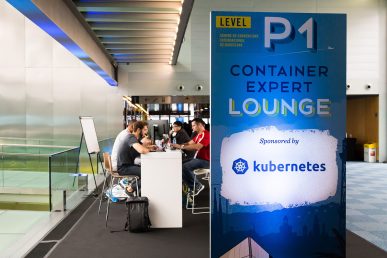Running an open source user group can be lots of fun but it sure is lots of work!
Between finding a venue, finding interested speakers (or building interesting content yourself) and promoting the event, you’ll be busy. However, you’ll definitely find it rewarding and it’s a great way to get involved in the community. I’m going to be sharing with you some of my tricks to running a successful user group.
Getting started
- Presentations are boring but hands-on sessions are a blast. One of my favorite sessions is a basic introduction to cloud computing. When I post the session, make sure to communicate it’s beginner friendly and there’s no previous knowledge required. I’ll even stay away from mentioning any particular technologies so I don’t scare people away. I’ll call the session “Clouds & Coffee” or “Cloud Computing Basics.”
- Promote your group through an Open Source foundation. Both the CNCF and the OpenStack Foundation provide sponsorships through meetup.com. This will cover the expenses involved with publishing events on meetup.com and get the word out to potential attendees. I also let local universities know – students love to attend technical meetups.
- Need a venue? Through Meetup, you can book a space (for free) at WeWork. When you create your first meetup event, you’ll be presented with a link to host the event at WeWork. Simply click through, book a room, and you’re set! Start off small with one of their conference room (six to 10 people).
- Public OpenStack clouds are your friends. Most of the public OpenStack cloud providers have basic tutorials available online that can form the basis of a user group session. For example, CityCloud has a basic tutorial on spinning up your first virtual machine. There you go, no need to put together any instructions, we’ll just point the attendees to the online post and walk them through it!
Ingredients for a productive meetup
- Introduce yourself and others! Before you get started, take a moment and let everyone introduce themselves and what brought them to the user group. This is a good way to find future speakers and future venue hosts. Right before the introductions, I like to start with a little video to give people a chance to find a seat and settle things down. “The World Runs OpenStack” is one of my favorite opening videos.
- Share details on an Etherpad! Before a meetup, I’ll create a bunch of generic cloud user accounts listing them Etherpad (i.e. user01, user02, user03) along with the session instructions. The beauty of Etherpad is anyone can update the file seamlessly. That helps the flow of communication amongst the attendees. You can create your own Etherpad for free at https://etherpad.openstack.org/.
- “Start here” goes on the whiteboard. As people arrive, I have the starting point of the session listed up on the white board. This includes the link to the session Etherpad, WiFi details, and any passwords required. Each person will claim a cloud account by simply updating the Etherpad with his/her name alongside the cloud account name. Latecomers can simply check the whiteboard and get started!
- Get things rolling with an ice breaker. These user sessions are supposed to be social! Before diving into the meat of the session, make sure to warm things up. Perhaps have each person explain, in a sentence or two, what brought him/her to the group and learning goals. Or, if you’ve got a prize to give away, a group round of rock-paper-scissors where the winner of each duel goes on (single elimination) until there’s a group winner. Everyone enjoys getting out of the chair and laughing for a few minutes.
- Walk around – stay social. While running the session, stay away from the podium and instead walk among attendees helping them through the tutorial. I will often leave my screen (via a projector) on the Etherpad so attendees can look up and see the next steps (without having to tab between windows on their laptops). I’ll check to see if anyone is stuck and general keep a pulse on how things are progressing. If someone gets stuck, I’ll update the Etherpad with clarifications.
Have fun with your new group!
About the author
John Studarus, president of JHL Consulting, provides cloud security product development and cloud security consulting services. Within the open source communities, he volunteers his time managing the community supported Packet CI cloud and running numerous user groups across the U.S. as an OpenStack Ambassador.
// CC BY NC
- Bringing open source to the bare metal edge - April 15, 2019
- How to run an open source user group - November 27, 2018

)










